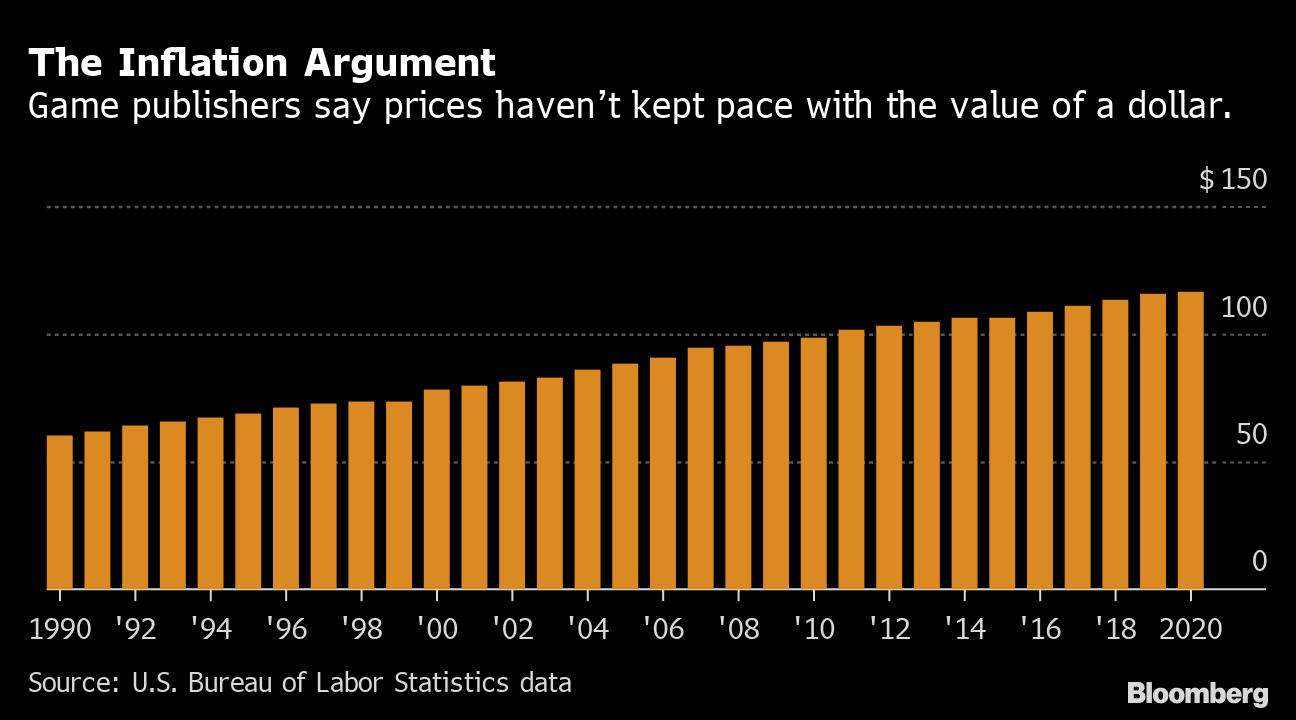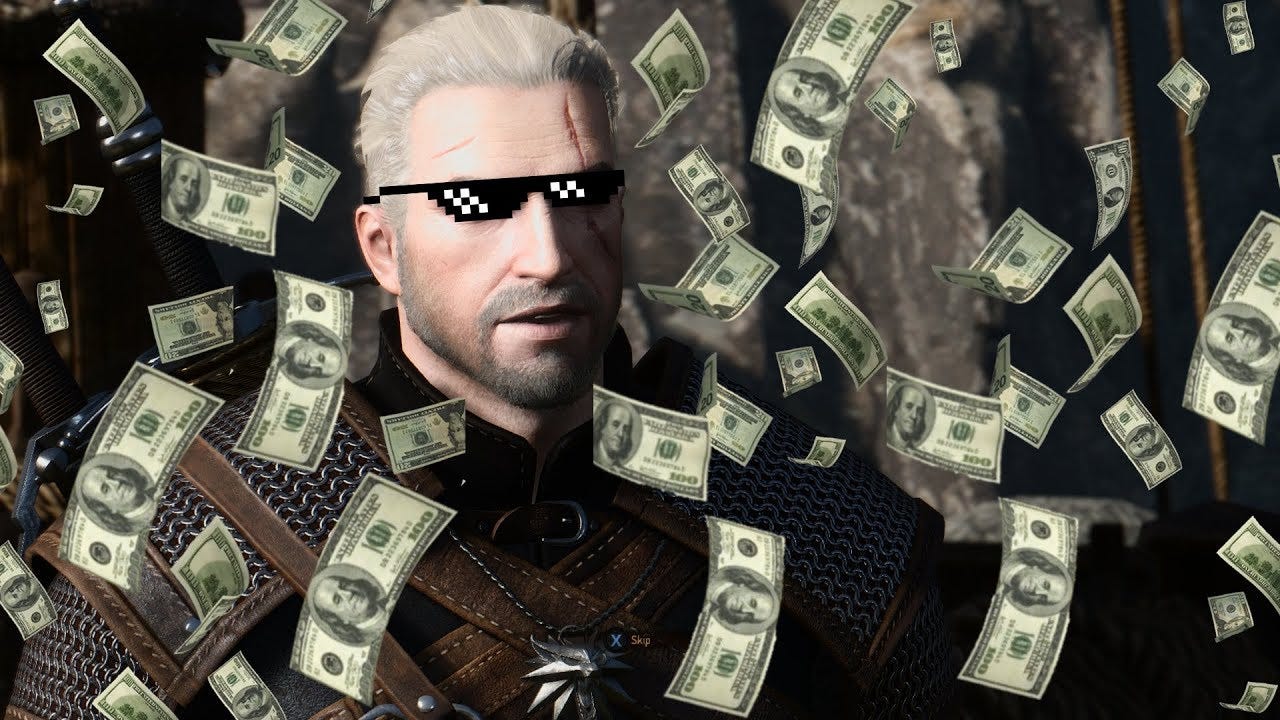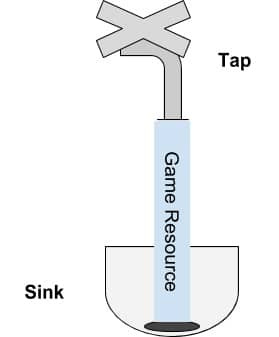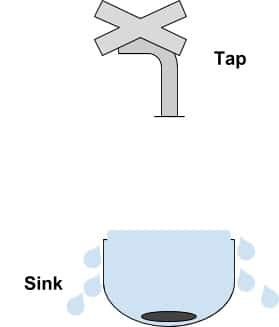How to create a Sustainable Game Economy? - Part-1
This is part-1 in a series of 3 parts. As this is an interesting and complicated concept, I wanted to divide it into different parts for better understanding and of course, for my convenience.
We all know that for a game to perform well, it needs to be fun first. But fun alone cannot guarantee that a game can be successful in the long run. It needs a sustainable Game Economy design and is even more important if we’re considering Blockchain games too..
Now, what is Game Economy? What does a Videogame have to do with Economy? How to create a sustainable Game economy? We’ll discuss everything below starting with…
What is Game Economy?
Game Economy plays a crucial part of a game. It not all about numbers, revenue generated blah blah… but goes beyond all that. It’s a system of Game loops which support the core gameplay to create an engaging experience for the player. These loops include Time loops, currencies, levels, Xp etc.. Different Game economies structures different player behaviors within the same game.
Why do you need Game Economy?
Like, let’s say if the Fun element is the heart of the game, then the Game economy can be considered as the brain. It is designed in such a way that the fun part of the game stays fun by running a series of core loops. They may include Monetizing strategies, In-game economic structures, applying an enticing value exchange and making own monetizing options accessible within the game (like marketplaces, loot boxes, items etc…)
Fundamentals of Game Economy
The most basic fundamentals of designing a Game economy is to give some resources to the player and observe how he utilizes those resources. The game designer should balance the game economy by setting limits of how much a player could spend or earn. The main aspects which are required to build and sustain a successful game economy are :
Taps : Taps or Faucets are the point of creation of a resource in the game. Every game rewards the players for their contribution in the game by progressing through certain levels or by achieving something. The players are incentivized using a kind of a resource or item or currency which are generated by like killing enemies, completing levels etc… which are considered as “Taps.”
Example : In the game Devil May Cry, you obtain “red orbs” for killing enemies or performing certain feats using different combat styles which gives you a style rank, rewarding the player with red orbs based on the combo length and style rank.
These enemies or style combos can be considered as Taps.
Sinks : Well, you know what a Sink is and what it does right? It drains the excess. Similarly, the resources generated by the Taps will need to be spent somewhere. Like, in a game, you gather all your Gold or any other resources, which are earned by completing different tasks to buy various Items or costumes or better equipment in the Marketplace which can help to defeat even better enemies.
Every game need Taps and Sinks as the main basic functionalities. The analogy of Taps and Sinks is an interesting one as it allows us to build a picture of a resource flow.
If the Tap is generating resources quicker than the Sink can remove it, then the excess build becomes effectively worthless to the player. He will then have no need to interact with the Tap.
Imagine playing a game in God mode with level 1 enemies. You have unlimited health as the Tap and the damage, which is the Sink could not offset the damage. Well, the result will be, you’ll eventually get bored after some time as the game’s not challenging enough.
However, the inverse can also true. Where there is too little motivation for a player to interact with it, it eventually pisses off the player despite the effort he puts in the game.
Now this is where we should discuss about…
Pinch point : It’s the correct balance between a Tap and a Sink. We can consider this as a point where the supply shows the utility of a resource but is scarce enough to have players continue to seek it.
Example : Take any game with a Hard currency . Provide the player with just enough of this currency so that the players become entrenched in using it and Boom!
They then crave more of this and this is when the game implements In-App Purchases (IAPs). This kind of pinching also keeps players motivated as they seek out those allusive gems. However, the Pinch point in the game may move as all the Sinks and Taps grow in size.
Now let’s discuss the most important and commonly used terms such as…
Inflation : Inflation is simply put, the increase in supply of resources which makes the value of the resource to be decreased. When the general price level rises, each unit of currency buys fewer goods and services; consequently, inflation corresponds to a reduction in the purchasing power of money.
In a game economy though, inflation typically appears in secondary markets, where players trade among themselves. The players are able to buy fewer items for a given amount of the game's virtual currency. I think that generally player acquisition is directly proportional to Inflation in a game. More players will be onboarding the game where there will be more resources coming off the Tap which will affect the Supply-demand balance. This may not seem crucial at the start as there will be more player base which will gain more traction for the game but will become severe overtime.

But Inflation is not always harmful to the game as Intentional Inflation works wonders some time as players progress, they feel rewarded by increased Taps. Incremental games make great use of intentional inflation by building Sinks that increase the taps exponentially constantly rewarding the player. Inflation is not all bad.
Deflation : Deflation is the inverse of Inflation. Well, it means decreasing the supply of resources to which makes its value to be increased. Deflation occurs when the inflation rate falls below 0%. Inflation reduces the value of currency over time, but sudden deflation increases it.
Well for starters, Gaming has never been cheaper. But with Free-to-Play games and consistently great sales gaming is cheaper than ever, and that’s not even taking into account the quality of games either. There has never been a better time to be a gamer.

Deflationary economy is mostly profitable for the sustenance of the game and its economy, but increased deflation might cause more harm than good. Like come on... You don't want the value of the resources you've earned so hard by playing to be dwindled. Those who played Witcher series will understand.
Anchoring : The process where you can build a resource from another kind of resource through one or more conversions is called Anchoring.
Take any RPG for example where crafting is one of the main aspects. You collect metal scraps, wood, cloth, minerals and various resources along the way while defeating enemies, or collecting them by completing various missions. Now you can use these resources and convert them into various equipment or use them to construct various buildings or stuff which can earn various benefits in the game.
But what does an anchor value allow us to do? Anchors are the yardstick of balancing and with them we can model, build and refine a game’s economy. You can say that Time might also be an Anchor value. Like introduce Timeskip as IAPs and BAM! You just found a way to make money. In other words, Anchors are the base on which we build our economies. But if as a designer you get your anchor values wrong the impact can be devastating resulting in under or Overpowered (OP) mechanics which can shrink the diversity of strategy making good games repetitive and dull. - Department of play
So, avoid linear exchanges and think about how values can vary with time, turns or other mechanics to make systems that create deep and varied strategies. Even if you occasionally build something OP.
In essence, having a single anchor value allows game developers a solid foundation on which to build their in-game economies.
Conclusion
As I said earlier, like a million times, the key to build an interesting Game economy is balance. All the matters we discussed above play a key role in building a well-balanced Game economy from the ground up and maintaining an optimum balance between these could lay a potential path for a successful Game Economy.
Game Economy is an ever-changing and ever-evolving concept. As I said in the header, this is a huge concept and cannot be covered entirely in a single part so, I’ll be making a 3-part series for this “Game Economy” concept.
We’ll be looking more into how to create and implement various concepts to build and sustain successful Game economies for both Traditional and Blockchain games in the upcoming parts.
Well, you made it to the end! Your support is always appreciated.
You can hit me up on Twitter, I am most active there and post blockchain gaming content. Feel free to reach out and connect via DMs.
Disclaimer
Not financial or tax advice. Any personal opinions and specific projects mentioned are purely for educational purposes. This article and its points are by no means a fully comprehensive guide and should be viewed as a supplement to the reader’s individual framework. Feedback is welcomed.









Well written.
Very well written. Looking forward to rest of the parts.